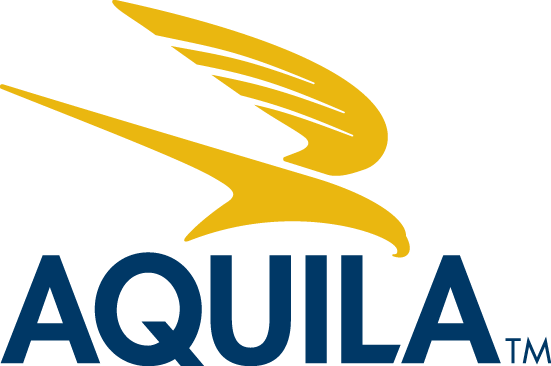Here at AQUILA, our property management team is frequently asked to explain the intricacies of the operating expense reconciliation process. To better assist our clients, we’ve outlined the basics of this process and what it means for tenants and landlords.
Read Now: What Are Commercial Real Estate Operating Expenses (Op/Ex)?
In this article, we discuss:
- What an operating expense reconciliation is
- Why and how property managers reconcile operating expenses
- How operating expense reconciliations can affect tenants and landlords
What is an Operating Expense Reconciliation?
An operating expense reconciliation is a comparison of the tenant charges that were billed for the previous year, compared to what the expenses actually were.
This process is similar to paying your income taxes. Over the course of a year you pay taxes on your income based on an estimate. Then, when you file your taxes in April, you will either have to send the IRS more money (because the estimate was too low), do nothing (because the estimate was correct) or you may even receive a tax refund in the mail because you paid too much. In the case of an operating expense reconciliation, the same basic rules apply.
Why Do Property Managers Reconcile Operating Expenses & How Do They Do It?
In general, a property’s operating expense estimate for the current year will be outlined in that year’s property budget. The estimate will also be shared with the building’s tenants to inform them what they will need to pay.
It is important to note that this is an estimate, which is why a reconciliation is so important; if the estimate turns out to be too high or too low, that variation will be addressed during the reconciliation process.
In the case of a triple-net (NNN) lease, operating expense estimates are paid by the tenant in addition to their base rate. These operating expense estimates can include, but are not limited to, property insurance and taxes, common area maintenance (CAM) fees, utilities, management fees, and/or administrative fees.
Read Now: What Are Common Area Maintenance (CAM) Fees? (Definition, Calculation)
A variety of components come into play when performing an operating expense reconciliation. Each variable contributes to determining what a tenant should owe in operating expenses and will be outlined in the tenant’s lease.
Base Year
If a tenant has signed a base-year lease, it can have a significant impact on the amount of operating expenses the tenant must pay.
A base-year lease is unique because the tenant is only responsible for paying its pro-rata share of the operating expenses that are in excess of the expenses established in the base year.
For example, say the operating expenses in the first year a tenant is in a building are $1,000,000 and the tenant occupies 20% of the building. This $1,000,000 will be the “base” by which future operating expense charges are calculated. If opex next year is $1,050,000, the tenant will be responsible for paying 20% of the additional $50,000 when the reconciliation is performed. This can lead to a larger bill/credit at the time of reconciliation and affect the cash flow of both the tenant and the landlord.
The Austin market has mostly moved away from using base-year lease structures like this, but you may come across some that are still in place.
Controllables and Non-Controllables
Non-controllables are defined as operating expenses that change independently of landlord decisions, such as utilities, property taxes and property insurance. For example, property taxes likely increase over time, which leads to higher operating expenses, but this is a factor a landlord cannot control. As a result, these expenses are not included in expense caps (detailed below). If non-controllable expenses increase more than projected by the property manager at the beginning of the year, these overages will be billed back to the tenants during the reconciliation process.
Controllables, on the other hand, are impacted by decisions made by the landlord and property manager. For example, the common area maintenance (CAM) fee may change if building services like janitorial or security increase or decrease, which will be included in caps. This means overages for controllable expenses may be billed back to the tenant but will depend on if the tenant has an expense cap and what the terms of that cap are.
Expense Caps
An expense cap is the maximum amount that a tenant’s controllable operating expense charges can increase year-over-year. Common in NNN leases, caps protect tenants against large increases in controllable operating expenses from one year to the next. Non-controllable expenses, however, are not included in caps.
There are two types of caps: non-cumulative and cumulative.
Non-cumulative caps limit the maximum allowed increases in operating expenses over the previous year. For example, consider a scenario where the previous year’s operating expenses are $1,000 and the tenant has a 5% cap year-over-year. The following year, they would be responsible for, at most, $1,050 in operating expenses (1,000*1.05 = 1,050). Each year the opex charge is only allowed to increase, at most, 5% from the previous year.
Cumulative caps give the landlord more flexibility in recovering opex costs from tenants. With this type of cap, the landlord can recover “unused” increases from past years. Using the previous example, say the base year expenses are $1,000 and there is a 5% cumulative cap in place. If opex increases to $1,020 in year two (a 2% increase) the landlord retains the unused 3% for future use. Then, if opex in year three increases to $1,101.60 (an 8% increase), the tenant is responsible for the full amount through the combination of the previously unused 3% and the 5% cap.
The importance of caps in the reconciliation process is that they limit what a landlord can charge a tenant in opex. This provides both a safety net for the tenant and an incentive for the landlord to keep operating expenses relatively controlled. Without caps, a large increase in opex uncovered by the reconciliation process could cause a tenant significant, unexpected financial hardship.
Time in Space
A tenant’s time in space refers to the number of calendar days a tenant occupies a space in a given year. If the tenant moves in on a day other than the first or last day of the calendar year, their pro-rata share of operating expenses will be based on the number of days they spent in the space that year. As a part of the reconciliation, the property manager will confirm the tenant pays the correct amount of operating expenses based on the number of days the tenant has occupied the space.
Gross Up Provisions
Gross-up provisions delineate that if there is a significant vacancy in a building, the landlord can estimate what the operating expenses would be if the building was fully leased and charge the tenants their pro-rata share of that amount. Expenses typically included in gross-up provisions are those tied to occupancy levels, such as utilities or janitorial services. Whether the gross-up expense is paid over the course of the lease, at the end, or under some other arrangement, the property manager will need to factor this into the reconciliation process. These provisions are almost never seen in any property type other than office space.
Because this can be complex and is very important for tenants to understand before signing a lease, we recommend learning more about gross-up provisions.
How Reconciliations Affect Tenants
Once the operating expense reconciliation is completed, the property manager will inform tenants whether they overpaid and will receive a credit, paid the correct amount or underpaid and will need to pay an additional amount. This can obviously affect both landlord cash flow projections and tenant finances.
If the reconciliation indicates operating expenses were underpaid for the year, it can have a major impact on tenant finances. A tenant cannot plan for the additional cost, so if the amount due is large, it may be a burden to a small business with limited funds, especially if no expense cap is in place.
How Reconciliations Affect Landlords
Contrarily, if the reconciliation uncovers that operating expenses were overpaid, giving a large credit to a tenant can hurt a landlord’s cash flow. Even if the reconciliation uncovered that operating expenses were in excess of what was budgeted if the tenant has an expense cap the landlord will be responsible for paying any expenses in excess of what the tenant is required to pay.
To help avoid these issues, operating expense reforecasts can be done mid-year to soften the blow. This way both tenant and landlord can spread the potential burden out over several months.
Conclusion
We hope this article gave you a better understanding of operating expense reconciliation and the impact it can have on both landlords and tenants.














